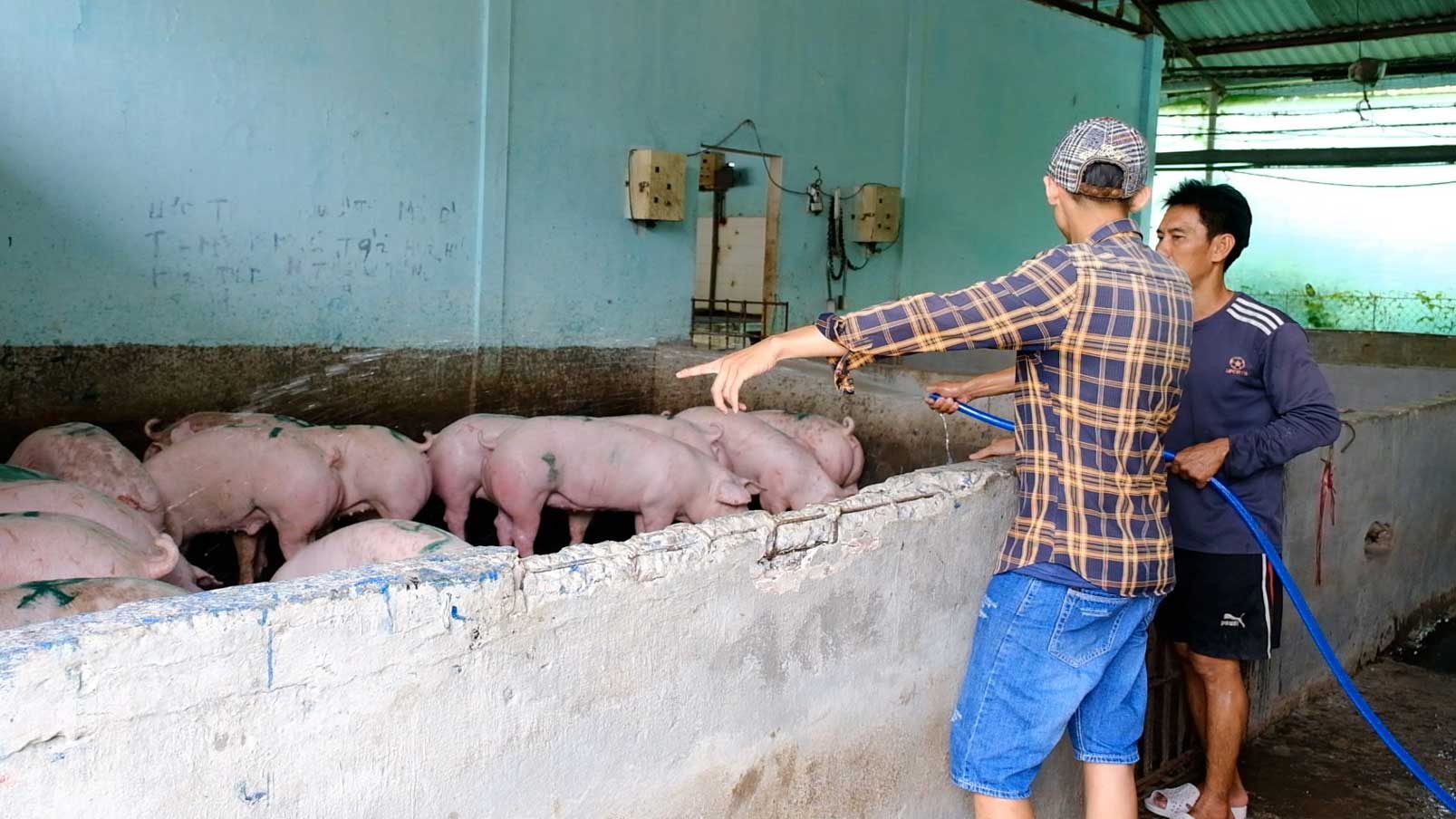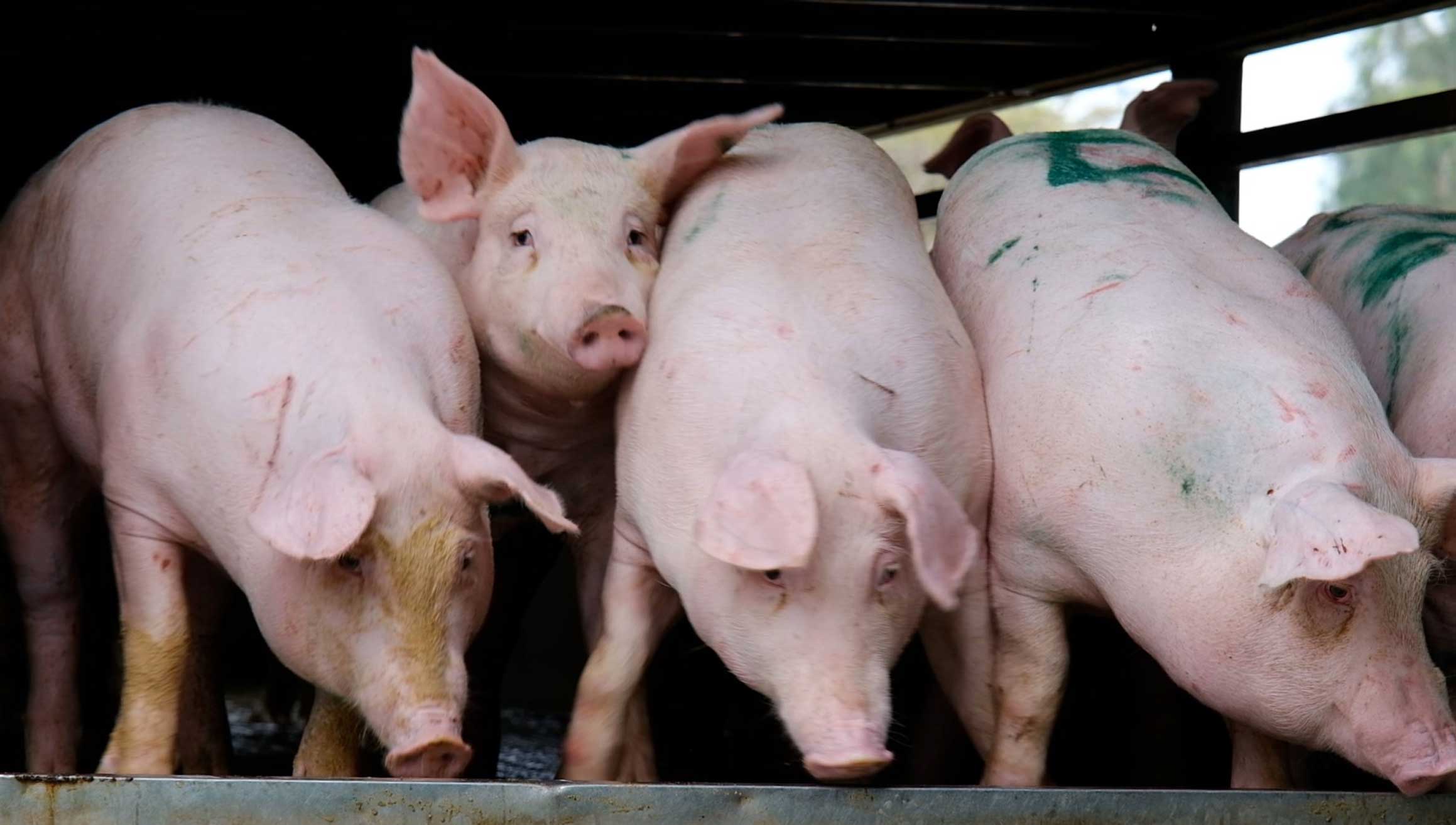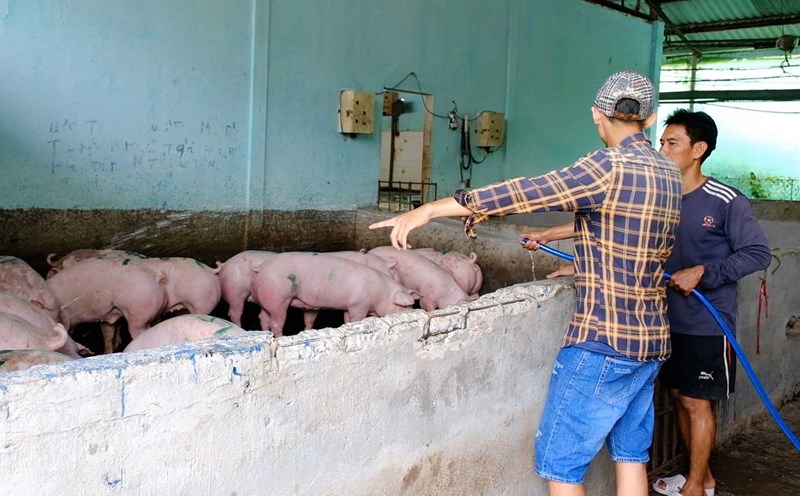Stable output, high selling price
In the past 3 months, the price of live pigs in the Mekong Delta in general and Can Tho in particular has remained high, ranging from 68,000 - over 80,000 VND/kg. This price has brought quite a profit to many livestock farming households.
Ms. Nguyen Thi Tu (a livestock farmer in O Mon district, Can Tho city) said that since the end of February this year, the price of live pigs has increased sharply. When selling each pig (about 100 kg), the family earns an average of 1.5 - 2 million VND. This is a good profit for a long-time pet owner like her.
In previous years, there was a time when live pigs were sold for only 48,000 VND/kg. At that time, the family had to suffer a loss of nearly 500,000 VND/pig because raising them would cost more maintenance costs, delaying the time to re-herded the new pigs..., Ms. Tu said.

Mr. Tran Chi Thanh (a livestock farmer in Binh Thuy district, Can Tho city) shared that since the beginning of the year, the output of live pigs has not only been stable but the selling price has also been very good. In the most recent sale in March, Mr. Thanh earned nearly 3 million VND/pig (about 100 kg).
"Swedges are purchased by traders regularly, without congestion. The price of live pigs is purchased at 76,000 VND/kg plus self-produced breeds, so my family made quite a good profit. After deducting all expenses, the profit is nearly 3 million VND/pig (about 100 kg), said Mr. Thanh.
Previously, after Tet, the price of live pigs in Can Tho began to increase following the market, the strongest from mid-February 2025 to mid-March 2025, fluctuating at 65,000 - 82,000 VND/kg. The cause given by traders and businesses selling live pigs and commercial pork in Can Tho is the impact of African swine fever. However, the supply in the area remains stable, meeting market demand.
Consider expanding your scale
The price of live pigs remains high, helping to bring good profits, but livestock farming households are still quite cautious in increasing the number of herds. Accordingly, epidemic risks, market fluctuations and increased production costs are the reasons for this.
Mr. Thanh said that the price of live pigs is still high, but there is a downward trend. Meanwhile, prices of industrial foods, drugs, etc. have increased. To reduce the risk, Mr. Thanh only re-arranged the herd in the same number as the previous batches.

Ms. Tu also did not increase the number of re-herded pigs due to market fluctuations and high farming costs. She also followed local recommendations on food safety and disease prevention to ensure the quality of herd.
According to the Department of Agriculture and Environment of Can Tho City, animal husbandry changes clearly on the organization of production, farming, concentrated in a closed chain, biosafety, epidemic safety; Developing breeding according to VietGAHP process. As of April 2025, the total pigs in the city had 128,171 children, exceeding 0.1% compared to the plan, down 0.3% over the same period. The city's agricultural sector has strengthened the inspection and closeness to the situation of animal diseases in the area in order to early detect disease outbreaks to organize the treatment of outbreaks quickly and promptly to avoid spreading widely when the disease occurs.











